History, nature, diving, and known and unknown sights in a mini-guide dedicated to Eastern Crete.
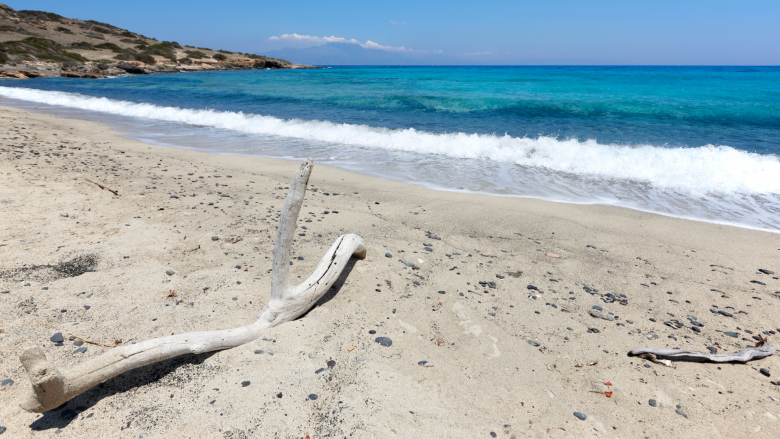
Chrysi and Koufonisi
For exotic dives, take a boat trip to Chrysi and Koufonissi two enchanting islands in the South Cretan Sea across from Ierapetra and Makris Gialos, respectively. The most popular is Chrysi (or Gaidouronisi), with dunes, cedars, and fantastic waters – once a destination for free camping, today with umbrellas, sunbeds, and canteens. Its most famous beach is Belegrina, in the northern part, which you can reach by starting from the small port of the island, known as Vougiou Mati, and crossing the dunes.
Koufonissi (or Lefki) is a more low-key destination and does not attract as many visitors. It has brown sandy beaches, white rocks, and low vegetation, while it is also of archaeological interest, as an ancient theater of the 2nd century has been found here. A.D. and the remains of a settlement. Both islets belong to the European Natura 2000 network of protected areas.
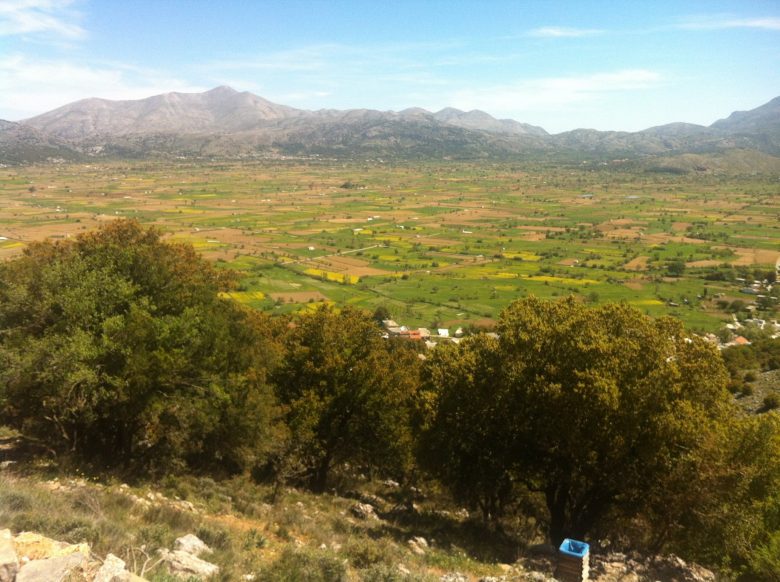
Lasithi Plateau
The Lasithi Plateau, which is bounded by the imposing mountains of Diktis, is the largest in Crete and is located in the west of the prefecture at an altitude of 800-850 m. It is 28 km from Malia and 44 km from Agios Nikolaos and the route to reach it is quite tiring, full of turns. Nonetheless, it is worth visiting because here you will see a different side of Crete: a fertile plain full of half-destroyed windmills that were used in the past by the inhabitants to irrigate their fields, and around it a series of semi-mountainous villages built in a circle. Most of them are similar to each other: they have one-story and two-story houses with washed-out wooden windows, shops with traditional textiles, and cafes with people chatting while drinking raki.
The inhabitants of the Plateau live mainly from livestock and agricultural production. Walking through a village, you might see the members of an entire family sitting on plastic chairs on the side of the road cleaning beans. It is most likely that they are preparing to send them to one of the street markets of Crete. These mountain people are genuinely hospitable and offer you everything they have generously because it is simply in their DNA.
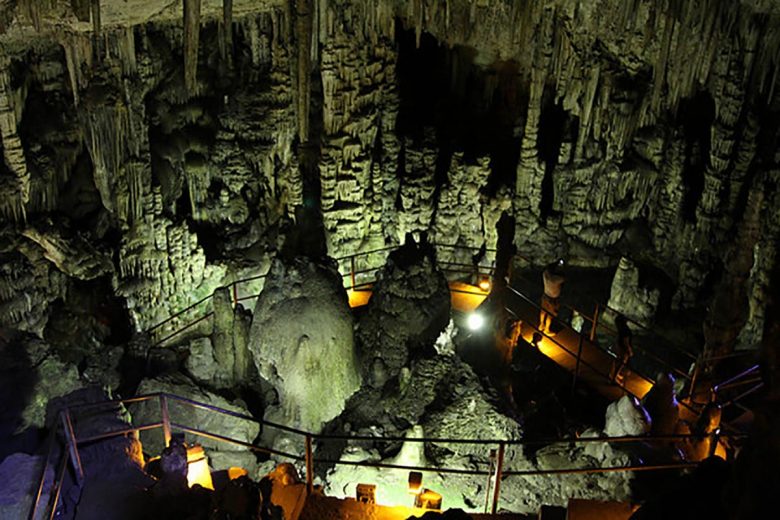
Diktaion Andron
The most popular attraction of the Plateau is the Diktaion Andron (or cave of Psychros) which you will reach after 15 to 20 minutes of relatively demanding climbing via the hiking trail that starts from the parking area near the village of Psychros. According to one version of the myth, Rhea took refuge in the cave to give birth to Zeus, who was raised with her milk by the goat-nurture Amalthea with the help of the Kourites (mythical figures who covered his crying with their dance). The tour route of the cave is designed in a circle and throughout its length, you will be able to admire impressive stalactites and stalagmites.
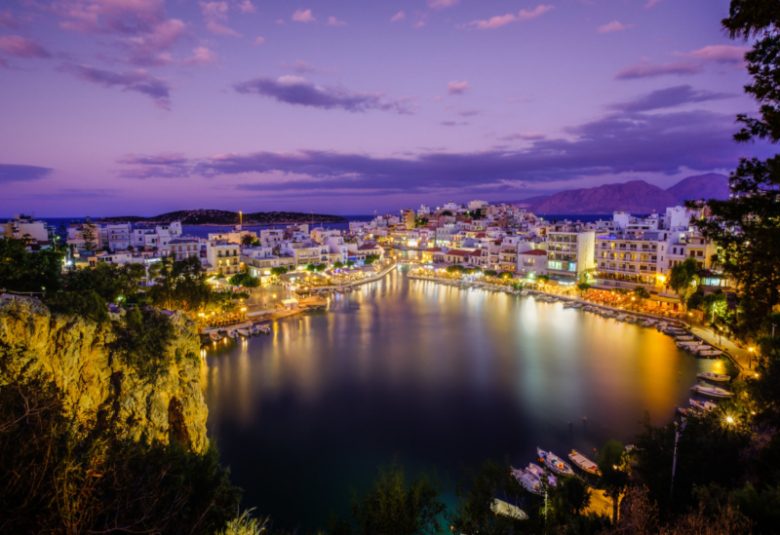
Lake Voulismeni
The most beautiful attraction of Agios Nikolaos is Lake Voulismeni. A small lake connected to the sea through a narrow channel. Voulismeni is not just a natural monument, but a place where you can hear the pulse of the city: uncrowded in winter, and full of life in summer. Before the pandemic, at the beginning of the summer, they organized a Cliff Diving Show with spectacular dives, from a height of 20 meters, by athletes from all over the world. One place that offers a satisfying view of Voulismeni is the café-piano restaurant Migomis, a favorite of locals, where you will go for coffee and selected dishes of Mediterranean cuisine.
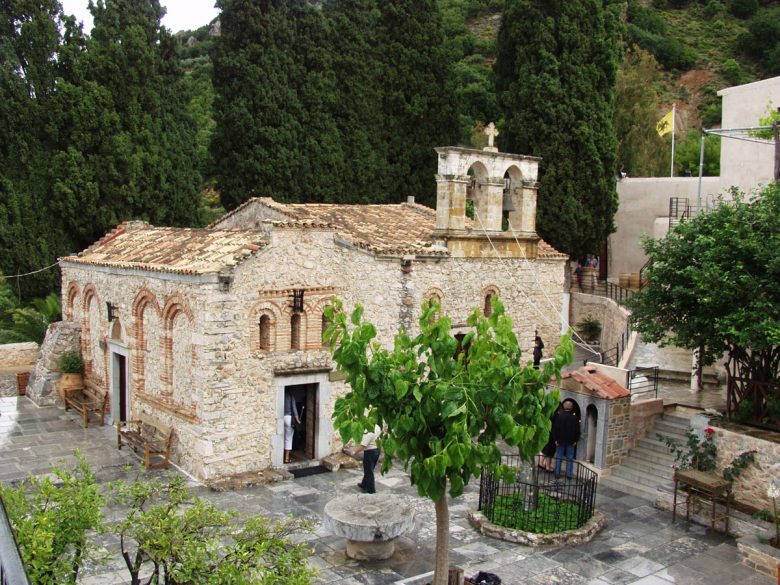
Panagia Kera
At a relatively close distance (8.5 km) from Agios Nikolaos and just outside the village of Kritsa is the Byzantine church of the 13th-14th century Panagia Kera. The first thing that will impress you is its facade which forms three triangles. However, the frescoes inside are equally interesting. They have been crafted in different eras and depict Herod’s Symposium, Infanticide, Last Supper, and Psychostasis. After Kera, take a walk through Kritsa, a famous village in the area. Alternatively, visit the Katharo Plateau easily accessible from here, a pasture with huge privets and few tavernas, anything but touristy, cool even in summer, and ideal for hiking or cycling. Fossils of 550,000-year-old dwarf hippopotamuses have been found in the area. This makes Katharos an important source of information about Paleolithic Crete.
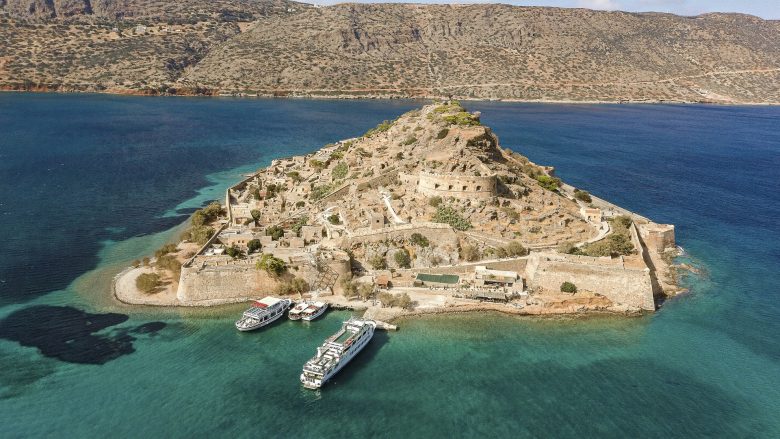
Spinalonga Island
“The rock of Spinaloga is no longer a military fortress, as it was in its glorious time, nor a humble Turkish village. “The Cretan Government, for the controversial service of sanitary purposes and with a disregard for historical memory, turned it into a leper asylum”. Wrote the Italian archaeologist Giuseppe Gerola in 1906. Almost a century later the history of the place of isolation of the lepers became a source of inspiration for the multi-awarded British writer Victoria Hislop who wrote ”The island”. This book became an international best seller. Today it is the first tourist attraction of Crete after Knossos.
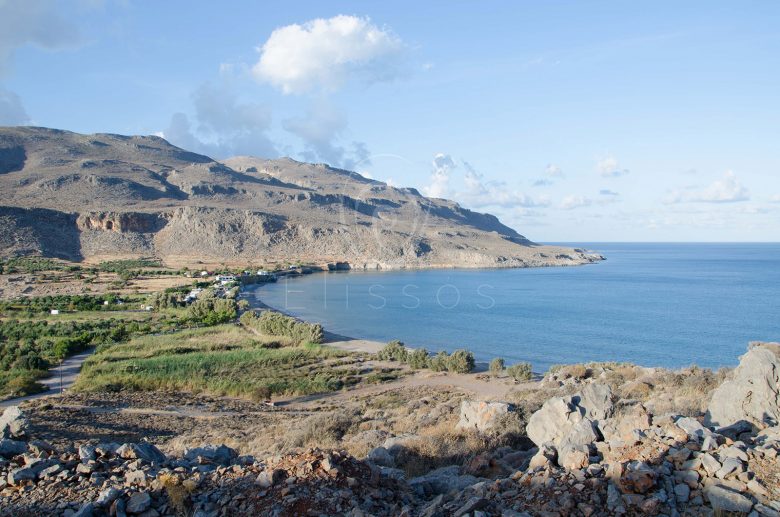
Upper and Lower Zakros
In wild eastern Crete, between gorges, Zakros is the village that enjoys the coolness of the springs. It can be your starting point for hiking in the Gorge of the Dead which is part of the European trail E4. From here you will reach Kato Zakros, which is now a small fishing village, but in ancient times it was an important trading port of the Minoans and one of their four main administrative centers along with Knossos, Malia, and Phaistos. In the archaeological site of Kato Zakros, you will see the ruins of the Minoan Palace built around 1600 BC. From Ano to Kato Zakro, the hike takes about two hours. A cool dip on its beach at the end of the route will rejuvenate you.
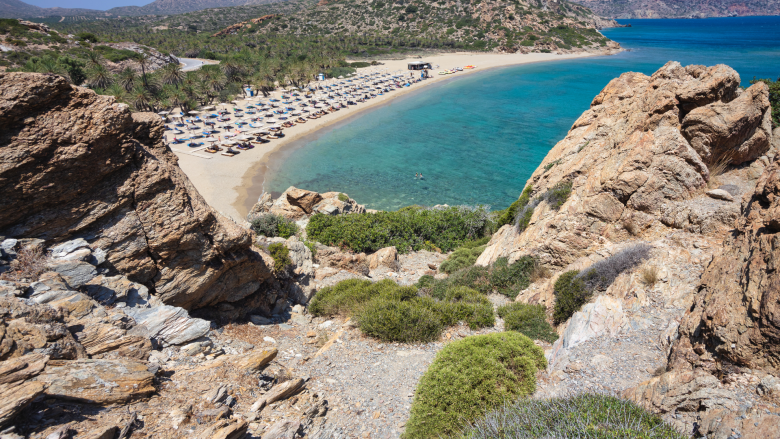
Palm Forest of Vai
Vai was a haven for “flower children” until the 1980s. Today, the face of the area has changed. Vai is one of the most touristic places in Eastern Crete. Here is the largest natural palm forest in Europe with the so-called Cretan dates. It is a rare endemic species of the Aegean that thrives in wet sandy soil, and reaches 15 m. Sometimes has more than one trunk! In front of the palm, the forest stretches a large organized beach with blond sand. Here you will also find theVai Restaurant. Certified by the Agri-Food Partnership of the Region of Crete with the “Cretan Kitchen” label, it serves fish and seafood, local raki, and organic wines from Toplou Monastery, which is a short distance from here.
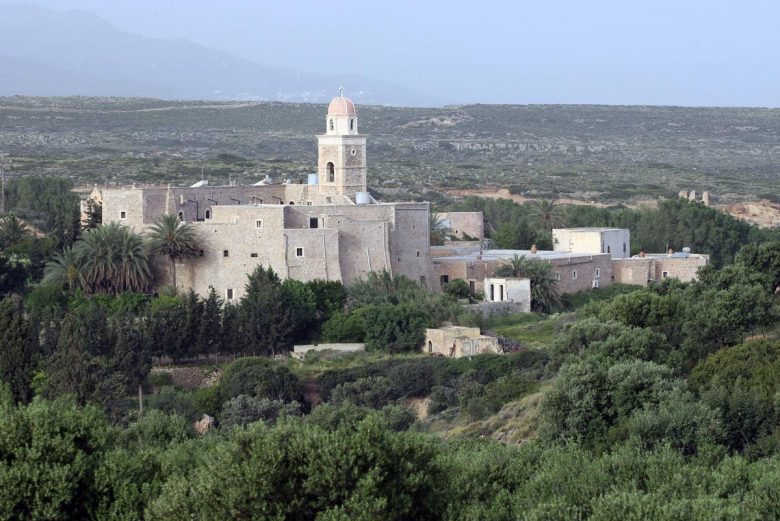
Toplou Monastery
The fortress-style Toplou Monastery is one of the richest and historically most important monasteries in Greece. From the 15th century onwards, it was a bastion of the Cretan resistance. First, against the pirates, then secondly, against the Ottoman Turks. Finally, during the Second World War against the German invaders. In the Toplou Monastery, there are very important portable icons. Furthermore, there is a museum of Copperplates and Greek Folk Engravings. They host the works by the monks of Mount Athos in the 18th-19th century. Also on display are objects of ecclesiastical art such as Gospels, crosses, seals, revolutionary banners, high priestly vestments, and others. Finally, if you are a fan of tsikoudia, we recommend the one produced and sold in the Monastery.
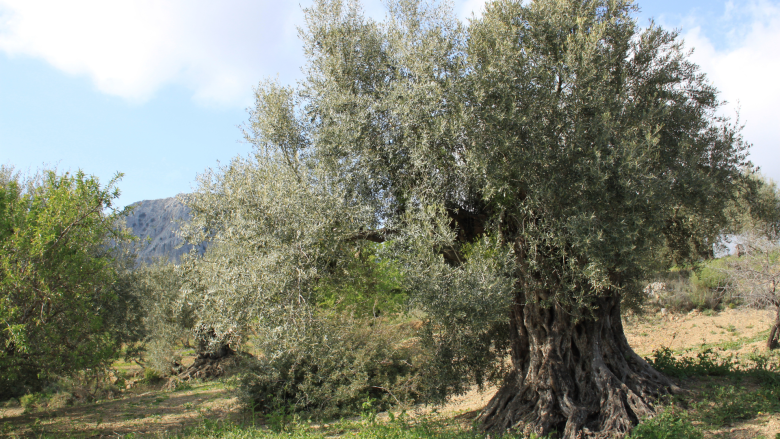
The Olive Tree of Azoria
Northeast of Ierapetra, near the archaeological site of Azoria, you will find theMonumental Olive Tree of Azoria which is considered to be the oldest in the world. It is estimated that the tree was planted somewhere between 1350 and 1100 BC. Its trunk is now over 22 meters in circumference at its base. At the 2004 Olympics, following a proposal from the residents of the area and the Municipality of Ierapetra, the winner of the Women’s Marathon, Naoko Takahashi, was crowned with a branch from the olive tree that was cut down in a special ceremony.
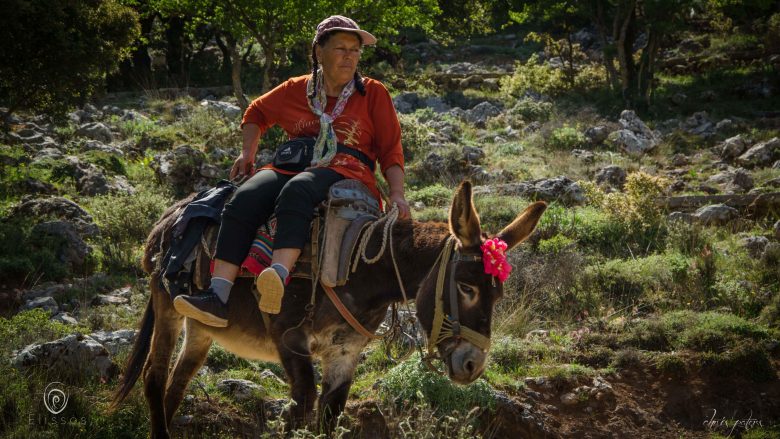
Elissos Travelling Philosophy East Crete Tour Suggestions
Lassithi Plateau & Diktaion Andron
This is an excursion to the eastern province of Crete and to the beautiful mountains of Dikti. Reaching an altitude of 850m above sea level reach the fertile plateau of Lassithi. With its unique traditional villages and Byzantine churches. At an altitude of almost 900 meters above sea level, you will visit the Cave of Zeus. One of the most impressive Temple – Caves on Crete.
It is the birthplace of the Father of all Gods and Immortals, Zeus, according to Homer. You can reach the Cave on a Donkey ride, which both kids and adults love and truly enjoy! Alternatively, you will hike for twenty minutes each way. In one of the Lassithi villages, you are welcome to experience the traditional Cretan mountain cuisine and exquisite local wines. We also highly recommend a traditional Meal at a local’s house hosted by the local family!
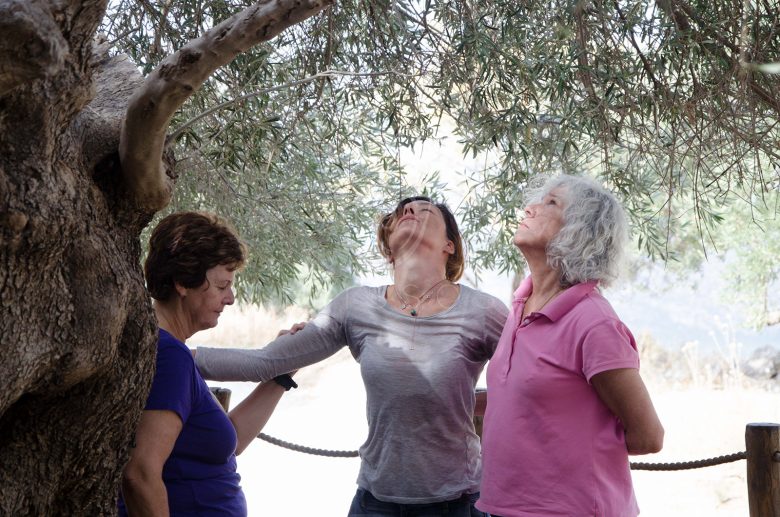
Minoan Eastern Crete
Your day will start visiting the amazing excavations of the Minoan industrial small town, trading and arts center of Gournia. You will be walking along prehistoric houses, pedestrian alleys, art workshops, and cult areas. You will explore how everyday people lived four thousand years ago. Seek the similarities with local life today in Crete. By the oldest olive tree of the Mediterranean – a 3250 years old natural monument, experience a dance workshop on the Minoan Seasonal Dances. Inspired by ancient postures and ritual dance depictions in Minoan Art. You will attempt an approach to the Minoan Ritual Dance through a theoretic presentation and a practical dance session.
Welcoming the Spring, awaking the Land, Swirl fertility Dances, and Tree or Altar Dances are some of our thematic cores. Music and natural elements will accompany your attempt and help you go deeper into this unique experience. Eat and swim at the traditional seafront village of Mochlos. One of the few villages on Crete formed literally on the water.
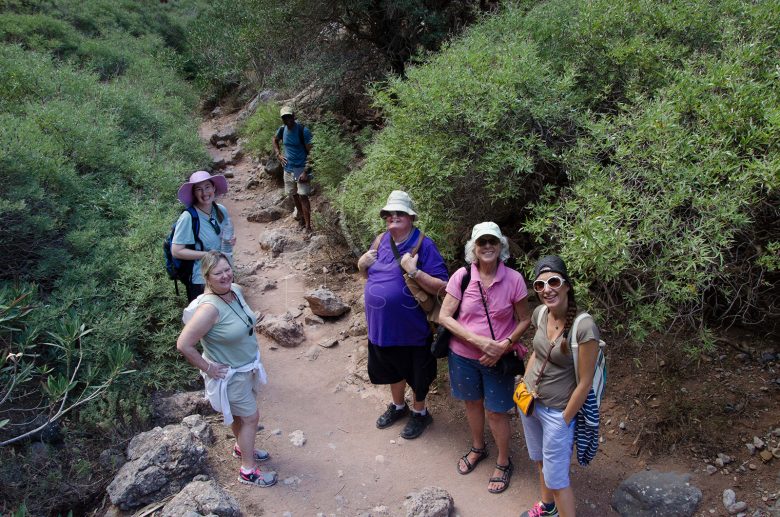
The Mystical Palace of Zakros
Your day will start with a Meditation Practice by the oldest olive tree in the Mediterranean. A 3250 years old natural monument. Through stretching and breathing exercises you will connect with the land and the sacred Tree. The so-called Ravine of the Dead will accommodate your unique hiking in wild nature. The Ravine runs through the ancient site of Zakros. It is named after the numerous Minoan burials that have been found in the caves along its walls.
Your hiking will take about three hours ending up at the entrance of Zakros Palace. The palace at Zakros is the fourth in terms of size, among the Minoan palaces at 4000 years of age. It was located in an advantageous strategic position. Furthermore, it was the center of commercial exchange and trade with the countries of the East throughout the Minoan period. The palace was an administrative, religious and commercial center surrounded by the town of Zakros.


